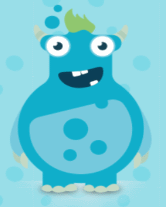Materials
- Flashlight
- Orange
- Ball of clay, about ¼ the size of the orange
- Ruler
Procedures
- Put the orange and the clay on a table, in a line, about 8 inches apart.
- Stand about 2 feet away from the table. Hold the flashlight at the same level as the clay and the orange, then shine the light from behind the clay ball.
- Check out the shadow on the orange.
In the experiment, the clay represents the Moon, the flashlight the Sun, and the orange is the Earth. When the moon blocks the Sun's light from the Earth, it casts a shadow on Earth. The darker, middle part of the shadow is called the umbra. The lighter shadow on the outer rim is called the penumbra.





